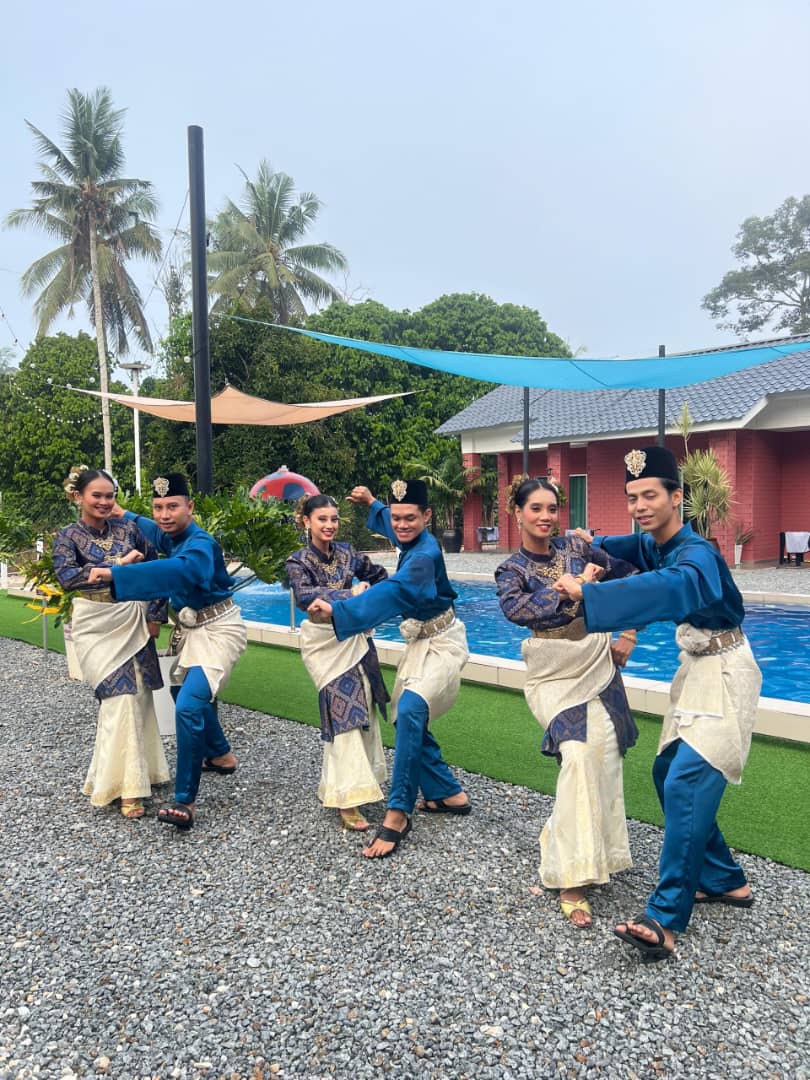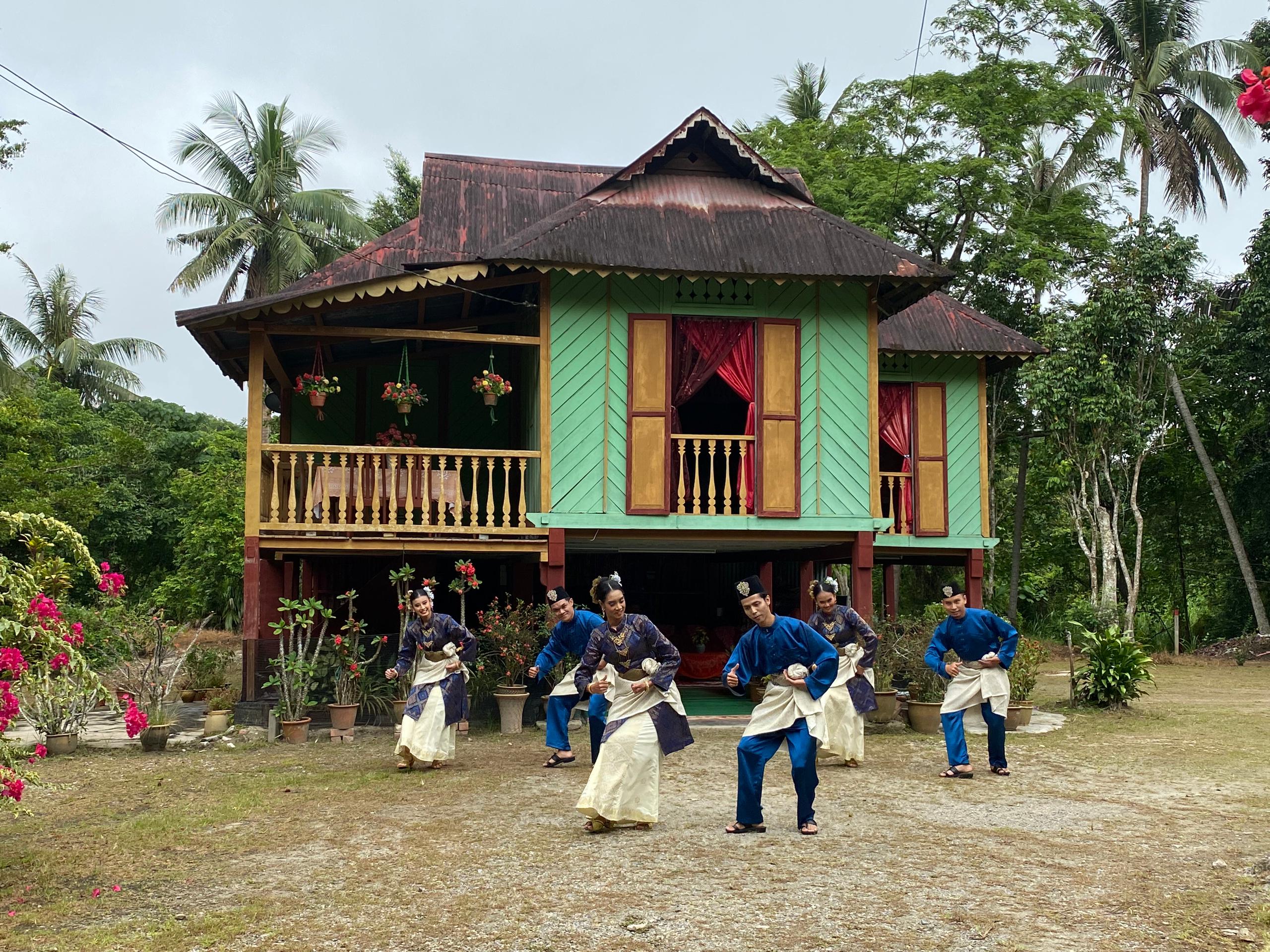ARTS AND CULTURE INFORMATION GATEWAY
Immerse yourself in the colorful world of art and culture! From traditional heritage to contemporary works, discover uniqueness that reflects the nation's identity and identity
TARIAN ZAPIN RAUB
Picture
4
Video
Available
Today's Visitor
336
Number of Visitors
1587
Introduction and history
Generally, zapin is one of the traditional Malay dance forms with deep historical roots, influenced by Arab and Islamic cultural elements introduced by missionaries and traders from the Middle East around 500 years ago. The uniqueness of zapin lies in its ability to assimilate with the local culture in every region where it developed. In the state of Pahang in particular, zapin has evolved into a distinct cultural identity, enriched with local adaptations and passed down through generations within the community.
One notable example is the Zapin Rao dance, also known as Zapin Raub, a unique branch of traditional dance art in Pahang, particularly flourishing in the Raub district. This dance originated from the cultural influence of the Rao or Rao-Rawa community, who migrated from Sumatra, Indonesia. The Rao community migrated to Peninsular Malaysia around the 19th century and settled in various areas, including Raub. Along with their migration, they brought with them a rich heritage of cultural arts such as music, dance, customs, and traditions, which have become part of their identity.
The dance was adapted to incorporate the local cultural elements of the Rao-Raub community. While Islamic religious values remain the core foundation of the zapin performance, its dance movements have been enriched with local elements, resulting in a style that is simpler, more relaxed, and reflects the uniqueness of the local community compared to other zapin variations found in other Malaysian states.
According to oral historical records, the dance was originally known as “Zapin Durian Sebatang”, named after its birthplace, Kampung Durian Sebatang in Raub. It was first introduced in the 1930s and was created by a local traditional musician, the late Alias bin Gek. The uniqueness of Zapin Durian Sebatang lies in its musical composition, lyrical arrangement, and the creation of nine basic dance steps. Initially, this dance was primarily performed at wedding ceremonies and usually featured two or four male dancers.
The involvement of the next generation, particularly the son of the original creator, Hamzah bin Alias, also known as Tok Mezah, has ensured the continuity and survival of the dance within the local community. To further popularize the dance’s identity and elevate its status as a cultural treasure of the Raub district, the name "Zapin Raub" was eventually introduced. This new designation not only solidified its position on the cultural heritage map of Pahang but also established Zapin Raub as an important artistic legacy to be preserved and promoted to this day.
Zapin Raub is not merely a form of traditional dance but also serves as an important medium in the social and cultural life of the Malay community in Pahang, particularly in the Raub district. Primarily, the main function of this dance is as a form of folk entertainment, especially during festive occasions such as village feasts, weddings, cukur jambul (infant hair-cutting ceremonies), and khatam al-Quran (Quran completion ceremonies). In this context, Zapin Raub functions as a social performance that fosters friendly interaction and strengthens the spirit of unity among community members. The performance also serves as a symbol of respect and honor to the guests, in accordance with Malay customs that emphasize courtesy and proper etiquette in receiving visitors.
Beyond its entertainment role, Zapin Raub also plays a significant role as a medium for spiritual and moral education. This can be seen through the lyrics of zapin songs, which often contain elements of advice, subtle satire, and Islamic teachings. In this way, the dance conveys ethical messages indirectly to both the audience and performers, making it an effective form of religious outreach (dakwah) within the traditional society. The refined and modest movements of the dance further reflect the core values of Malay culture, such as modesty, decorum, and respect. Consequently, Zapin Raub serves as a means of identity formation and cultural value reinforcement, especially among the younger generation who participate in its training and performances.
Earliest, male dancers would only wear a simple Baju Melayu Teluk Belanga paired with a songkok to complete their appearance. However, with the passage of time and the influence of modern fashion trends, the male dancers' attire has become more varied, incorporating the Baju Melayu Cekak Musang, which features a stiff, raised collar. This is typically paired with a woven or songket waist cloth (samping) wrapped neatly around the waist. The dark-colored songkok remains the primary headgear, while some dancers further complement their attire with a bengkung (waistband) fastened with a pending (ornamental buckle), symbolizing elegance and the refined nature of traditional Malay dress.
For female dancers, they wear the Baju Kurung Teluk Belanga, which features a loose, long, and modest cut, reflecting the value of propriety within Malay culture. The women’s costumes are usually made from plain or delicately patterned fabric, paired with a sarong wrapped securely around the waist. To enhance the aesthetic appeal, female dancers also wear accessories such as selendang (shawls) draped over the head or shoulders, along with dokoh necklaces, brooches, and earrings as additional adornments.
In terms of makeup, female dancers maintain a modest concept with soft and understated makeup. The focus is on enhancing facial radiance and ensuring clear facial expressions throughout the performance, allowing facial gestures to help convey the beauty of the dance movements and the emotions embedded within the zapin performance. This simplicity in makeup also serves to preserve the authenticity of the performance, in line with the values of modesty and moderation that are foundational to Malay culture.
The Zapin Raub dance is accompanied by a set of traditional musical instruments that reflect a fusion of Malay heritage and Middle Eastern influences. Each instrument plays a unique role in producing the rhythm, melody, and overall atmosphere that create a harmonious and energetic performance.
Gambus
The gambus serves as the primary instrument in the zapin ensemble. It is a plucked string instrument resembling the Arabic oud, featuring a short neck and a rounded body. The gambus produces the main melody and is often played solo at the beginning of a performance as an introductory piece known as taqsim. The presence of the gambus highlights the Islamic and Middle Eastern influence that entered the Malay world as early as the 15th century.
Marwas
Also known as marawis, the marwas consists of a pair of small cylindrical hand drums played with the hands. This instrument serves as the main rhythmic foundation for the zapin dance. The alternating beats of the marwas provide a consistent pace and tempo that guide the dancers' movements.
Gendang (Drum)
The gendang reinforces the rhythmic structure. It is larger than the marwas and produces deeper, more resonant sounds. In the context of Zapin Raub, the gendang plays a crucial role in energizing the dancers, particularly during transitions between dance segments.
Rebana
Also known as the Malay tambourine, the rebana adds a softer layer of percussive sound, filling the spaces between the beats of the marwas and gendang. It provides textural variety and contributes to the dynamic rhythm of the zapin performance.
Violin
The violin is one of the instruments influenced by Western music but has been creatively adapted into zapin performances. It provides supporting melodies and improvisations that enrich the overall sound, weaving harmoniously with the gambus and harmonium.
Harmonium / Accordion
This keyboard instrument operates using airflow and supports both melody and vocals. It produces stable chords and musical backgrounds, strengthening the arrangement of zapin songs. The harmonium is sometimes replaced or paired with the accordion, another Western-influenced instrument that performs a similar function with a slightly different tonal quality.
Gong
The gong is a circular metal percussion instrument that is suspended and struck to mark transitions between segments or to emphasize climactic moments in the performance. The resonant sound of the gong creates a dramatic effect and adds spatial dimension to the stage atmosphere.
The combination of these instruments produces a rich and complete soundscape, ranging from percussive beats and plucked melodies to harmonic and melodic accompaniments, all contributing to the captivating energy of the Zapin Raub performance.
The performance of Zapin Raub requires meticulous planning in terms of dance training, musical arrangement, and coordination between the dancers and musicians. Prior to any performance, dancers undergo intensive training sessions to master the nine fundamental dance steps, which form the core structure of the presentation. Each step carries its own meaning and is arranged systematically to produce movements that are both harmonious and refined.
The nine main steps in Zapin Raub choreography are: Sembah Tamu (guest salute), Langkah Asas (basic steps), Hormat Tamu (guest honor), Teng-Teng, Bunga-Bunga (flowering steps), Sendeng Memikat (attractive tilt), Acah-Acah (teasing moves), Ragam Tak Jadi (incomplete variations), and Tahtom/Wainab (closing sequence). The performance typically begins with Sembah Tamu, as a gesture of respect toward the audience and honored guests. This is followed by Langkah Asas and Hormat Tamu, showcasing graceful and balanced movements of the hands and feet. Movements such as Teng-Teng, Bunga-Bunga, and Sendeng Memikat add variety and artistic expression to the choreography, while Acah-Acah and Ragam Tak Jadi display the creativity and unique formations that characterize the performance. The routine usually concludes with Tahtom/Wainab, bringing the entire dance sequence to its formal end.
In terms of musical accompaniment, traditional songs such as “Lanchang Kuning” and “Anak Ayam” were commonly performed during Zapin Raub presentations in earlier times. These songs are typically played in repetitive cycles at a moderate tempo to complement the gentle and elegant dance movements. The melodies often contain elements of moral advice, subtle satire, and life lessons conveyed in a relaxed manner, making the zapin performance not only entertaining but also educational.
Song lyrics of “Lanchang Kuning”
Lancang Kuning, Lancang Kuning,
Belayar malam hai belayar malam,
Lancang Kuning, Lancang Kuning,
Belayar malam hai belayar malam,
Haluan menuju, haluan menuju ke laut dalam,
Haluan menuju, haluan menuju ke laut dalam,
Lancang Kuning belayar malam,
Lancang Kuning belayar malam,
Kalau nakhoda, kalau nakhoda,
kuranglah faham hai kuranglah faham,,
Kalau nakhoda, kalau nakhoda
kuranglah faham hai kuranglah faham,
Alamatlah kapal, alamatlah kapal akan tenggelam
alamatlah kapal, alamatlah kapal akan tenggelam
Lancang kuning belayar malam
Lancang kuning belayar malam
Lancang kuning, Lancang kuning,
menentang badai hai menentang badai
Lancang kuning, Lancang kuning,
menentang badai hai menentang badai
Tali kemudi, tali kemudi berpilin tiga
Tali kemudi tali kemudi berpilin tiga
Lancang kuning belayar malam
Lancang kuning belayar malam
Song Lyrics of "Anak Ayam"
Anaklah ayam, anak ayam turun sepuluh
Mati seekor, mati seekor tinggal sembilan
Mari belajar, mari belajar bersungguh-sungguh
Supaya kita, supaya kita tidak ketinggalan
Anaklah ayam, anak ayam turun sembilan
Mati seekor, mati seekor disambar helang
Kalaulah kita, kalaulah kita dah ketinggalan
Ilmu tak ada, ilmu tak ada kawan pun kurang
Anaklah ayam, anak ayam turunlah lapan
Mati seekor, mati seekor ditangkap musang
Tiada ilmu, tiada ilmu tiada kawan
Hidup merana, hidup merana ditimpa malang
Both of these songs play a significant role in enhancing the narrative and emotional depth of the Zapin Raub performance, preserving the rich and meaningful heritage of the zapin tradition.
Mr. Hamzah bin Alias (Tok Mezah). No. D12 Felda Tersang 2, Raub, Pahang.
Reference Source
Bahan Bacaan
Koleksi Negeri Pahang. (2007). Zapin Raub. Pahang: Perbadanan Perpustakaan Awam Pahang.
Muhammad Zharif Azzuddin bin Mohd Tahir. (2016/2017). Zapin Durian Sebatang ke Zapin Raub sebuah invensi tradisi. Pusat Kebudayaan Universiti Malaya.
Mohd Anis Md Nor. (1993). Zapin: Folk Dance of the Malay World. Kuala Lumpur: Dewan Bahasa dan Pustaka.
Mohd Ghouse Nasuruddin. (2003). The Malay Performing Arts: Traditional to Contemporary. Kuala Lumpur: Dewan Bahasa dan Pustaka.
Matusky, P., & Tan, S. B. (2004). The Music of Malaysia: The Classical, Folk, and Syncretic Traditions. Aldershot: Ashgate Publishing.
Tokoh (jika ada temu bual tokoh)
Encik Hamzah bin Alias (Tok Mezah). No. D12 Felda Tersang 2, Raub, Pahang.
Location
State JKKN Contact Information
Puan Norazlina binti Othman
Cultural Officer
Jabatan Kebudayaan dan Kesenian Negara, Johor
Aras 6 Kiri, Wisma PERKESO
No 26, Jalan Susur 5
Off Jalan Tun Abdul Razak, Larkin
80200 Johor Bahru
JOHOR DARUL TAKZIM
07-224 8270 / 223 1249

 No. D12 Felda Tersang 2, Raub, Pahang
No. D12 Felda Tersang 2, Raub, Pahang










